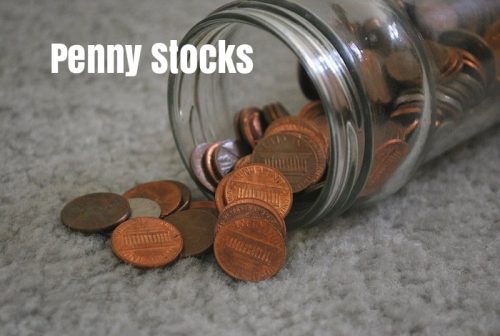A well-researched penny stock list can offer some of the largest potential returns. What is considered as a “Penny Stock”? Penny stocks are defined as those less than $1/share, and finding quality ones is key to solid investment returns, sometimes in a short time. Here, we will go over some penny stock essentials all investors should know.
Finding Penny Stocks
A quality stock screen should be able to give a list of penny stocks. Set search parameters for less than $1/share for the broadest list. Keep in mind that fluctuations around the $1 limit may mean that some stocks technically over a dollar may in fact be penny stocks if, at the time of your search, the stock happened to jump to over a dollar for a short time. Other search parameters like trading volume, company debt and stock volatility can narrow the list of potential investments for further research.
Cheap Penny Stocks
Investors naturally realize that to get a good ROI from penny stocks, it helps to buy cheap. This is true, but meaning of “cheap” has to be clarified. The price of a penny stock, by itself, tells nothing about whether or not it is cheap. Financial metrics like cash flows and liabilities like debt is key in determining value of a penny stocks. For example, a penny stock for just $0.04/share but with high debt/equity ratio and negative earnings is much more expensive than a stock that costs $0.97/share but has a small debt/equity ratio and positive earnings. Though more expensive at first glance, the second penny stock in this example would have much less risk of loss and greater chance of regular profits, therefore higher stock price.
Penny Stock Liquidity
Another consideration is that very low-priced stocks, like those trading at $0.01 to $0.05 per share often have low volume and can be difficult to sell even if, in theory, an investor has large gains on paper. Selling at a gain is not automatic or guaranteed. Anyone trying to sell a house knows this. Aside from price, debt, and earnings considerations, an investor should stick to liquid stocks.
What are Considered as “Good” Penny Stocks?
Let’s start with one critical fact: small companies that issue penny stocks are fighting an uphill battle in the market. Established giants in an industry have advantages based on:
- cheaper access to capital
- established reputation with consumers
- legal/regulatory perks
- economies of scale
- pricing power
- rewarding dividends
A small penny stock company has to have at least a plan to create new demand for their product or lure away existing customers from entrenched industry leaders. Both of these avenues entail significant risk even in the best circumstances. As such, many penny stocks go nowhere and fizzle out as creditors and equity investors lose patience at seeing negative earnings. To be an exception that delivers stellar ROI, the penny stock issuer must have this plan to either create demand or attract existing demand. A radically different business model, like Amazon’s efficient delivery of virtually everything denting traditional retailers like Walmart, is crucial.
Selling existing goods cheaper without proportionate and hard-to-replicate cost cutting measures is futile. Established businesses will almost certainly already be selling that product at bottom-barrel prices, forcing a penny stock company into the red with each sale. Again, investors have to look for a different business model in company-issued literature like press releases and regulatory documents.
Can You Make Money or Get Rich From Penny Stocks?
Of course it is possible to strike it rich with penny stocks. There are two things to consider: First off, once a penny stock starts showing gains, don’t sell out too soon. The reason for this is that penny stocks won’t rocket into the stratosphere based on temporary hype in the news or broad-market moves. There has to be a fundamental reason: new clients agreed to buy from the company, a regulatory agency approved a product that the penny stock issuer wanted to take to market, and so on. Ride the wave to large gains. Though a large-cap stock returning 20 or even 10 percent in a year is impressive, penny stocks can generate 1000s percent gains.
The second factor to consider is almost the opposite: sell when large gains accrue, don’t wait indefinitely. Consumer demand and company success typically follow a logistic curve as market saturation happens. When the curve starts to flatten, the penny stock is about as high as it will be barring new product, therefore, new risk. Sell if the stock issuer takes on large amounts of additional debt, looks as if it may engage in equity dilution to raise new capital, indulges in speculative expansion, or imagines themselves to be immune to market forces.
Though small gains based on optimistic fundamentals can transform into large gains, every company reaches a peak for a given product/service as the market is saturated. Many hard-working penny stock companies don’t deliver much ROI because of inability to compete in the market as well as stock liquidity issues. Be careful when deciding on penny stocks as investments.

